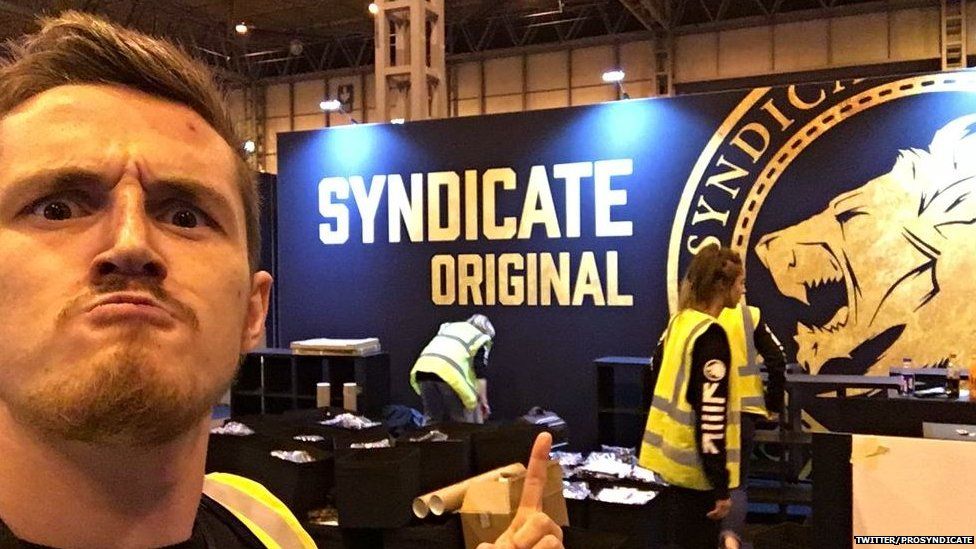When I was a (much) younger man, I spent a good percentage of my time partaking in far too much drinking, not enough studying, and far too much online gaming. This was around the time of huge franchises starting up, such as Call of Duty and my personal favourite Battlefield. I spent many-a-night staring at my 19″ CRT monitor, with my top of the range 512kbps ‘broadband’ connection and my cutting edge AMD Athlon CPU… times have changed in the gaming world significantly, but now enterprise methodologies are making their way into the gaming market – but will they be successful?
At the tender age of 18 I was obsessed with building gaming computers, and competing online in online leagues, and with my ‘clan’ at gaming events in the UK. We were far from the top, but had mild success at some of the events and it provided a wonderful distraction from university studying and stopped me going out every night drinking!
The e-sports business back in those days only really had one or two gamers who managed to make a living from the game, people such as Jonathan ‘Fatal1ty’ Wendel – now there are sponsors all over the show and multi-million dollar prize funds – people aren’t just making a living – they are successful businessmen in their own rights.
But its not just the highly skilled gamers that are making money – if you are an avid gamer, or have children who are will know that streaming services such as Twitch are making celebrities in their own right. Just round the corner from me in Manchester, UK lives Tom ‘Syndicate’ Cassell, a YouTuber who made himself famous from streaming himself play games. He has his own business, brand, and if the online media is to be believed, is worth more than $6.5m.

So what relevance does all this history give? Or am I just pining after your younger life cause I don’t have the time (nor energy) to play games for hours on end any more? Well, despite the advances in Internet speeds, graphics cards and the like – gaming has changed from being just something a geeky guy did in his bedroom to become mainstream. Forbes posted an article just a few months ago estimated the value of the industry at $155bn and expected that to grow to $200bn in just three years.
Large corporates such as Sony and Microsoft have been at the forefront of this industry for many years with their Xbox and PlayStations products, but this year there has been a lot of fanfare as Amazon & Google entered the arena. Neither of them have decided to build a console though, nor have they designed a super-duper PC – they’ve gone down the route of pure Cloud Gaming unlike Microsoft’s X-Cloud platform (a sort of hybrid approach of Xbox & Azure).
So what is Cloud Gaming? Essentially, its the concept that players can play games that are run on remote servers, but on local devices eliminating the need for expensive consoles (PS5 @ £450) or expensively put together gaming rigs (Latest Nvidia graphics cards retailing from £400-1800). All you need is reasonable access to the internet and some low-cost equipment, whether that be a laptop, an ipad or just a TV. They’ll send you a controller if that’s what you prefer, you pay a subscription (typically around £10 per month) and you have a high-spec gaming computer at your service, wherever and whenever you want to play. Hotel room? No problem. On the train? No problem? In the office whilst you’re supposed to be working? erm….
My point is, the likes of Google & Amazon are utilising their developments in the enterprise public cloud space and bringing it to a whole new industry. This seemed like the perfect chance to have a look at the two products: Google Stadia and Amazon Luna to see whether or not these concepts will last or just another couple of products that disappear into the ether.

Google Stadia
Google Stadia was launched just over 12 months in November 2019, and despite its early bugs and blips seems to be growing in popularity. You order their starter pack which comes with a chromecast ultra and a controller, plug it into your TV (or log on via a supported device) and you’re good to go with your £8.99 per month subscription.
But I’m a techie, and this isn’t an advert for Google Stadia. How does it work, and what are the problems. Essentially a browser or local application serves up a connection to a remote server which does all the grunt of rendering, and hosting your games – so your subscription just funds a cleverly architected machine on Google Compute Engine. They’ll tell you its like having a high-spec machine at your beck and call, but at the end of a really really long cable 😉
Those intelligent folk amongst us will see the problem immediately. They are offering 4K HDR images, 5.1 surround sound at 60 frames per second – not a problem if that device is 3ft away from you, but when its 100s or 1000s miles away from your sofa – bandwidth and latency are your enemies.

Stadia recommends 35mpbs connectivity for the best quality image to be streamed back to your device, but this isn’t Netflix – this isn’t 1 way communication. You have to press a key on a keyboard, a button on a controller, click your mouse – and even those casual Call of Duty gamers expect a responsive game otherwise that controller is finding itself thrown at the screen in frustration – this is why latency, not bandwidth is the real challenge here.
Best way to test your latency to a GCP region is here. Lowest I got was to London, UK (europe-west2) with a median latency of 32ms on a home broadband connection of 50mbps. Believe me, your mind can detect a 32ms response, especially those sensitive folks.
However if you do some digging, you’ll discover how Google have tried to counter this issue – by using their 142 edge nodes, that are closest to their partnered ISPs, a strategy used commonly in the Enterprise IT world to give fast response to SaaS products such as Office 365. They’ve even used their expertise from YouTube for compression codecs, ditched TCP & UDP for specialised data transport protocols like WebRTC & QUIC to make that experience smooth. If it isn’t – as a product its pointless.
The unique selling point of Stadia of its rivals is its YouTube integration though, which just got released yesterday. You can play on Stadia and stream it live to your YouTube channel (ala Twitch) and become a famous YouTuber in your own right. The test for Google is getting those big game titles on their platform, something they’ve struggled with to date.

Amazon Luna
Much less is known about Luna, given it’s still in beta and only released in October 2020. However the concept looks to be very much the same with Amazon. They provide you with a controller and you can use it with an Amazon Fire Stick, PC, Mac, iPad, etc.
Where Amazon’s approach is a little different is their architecture behind the scenes. Whilst Google are using custom processors and GPUs running linux, Amazon have gone down the route of tried and tested Windows boxes and Nvidia GPUs which given that most games are written for Windows and tested with Nvidia GPUs will surely give them the nod in getting more games onto their platform – key in getting those subscribers in. At the time of writing, Google have 90 titles in their catalog whilst the beta service from Amazon has more than 100 already – just proving my point that the backend platform will be critical here.
Amazon on the other hand own Twitch, a business they bought back in 2014 for just shy of $1bn – they aren’t going to be seen wanting in the subscriber arena either given their claims of more than 17.5m viewers daily.
There’s very little information on how they are delivering the low latency gaming, but given AWS’ sprawling global infrastructure, I don’t think its unreasonable to think that their local points of presence will be key to their delivery.
But why would Google and Amazon spend so much time, effort and money to get into the gaming space? Google are a data company right? Because Google and Amazon have to process every mouse movement, keystroke, device type etc, not to mention performance data and pattern of play they can sell that information to game developers, to provide more engaging games, to understand who plays what type of game and when, the demographics of their players. Not to mention performance diagnostic issues with certain games, allowing bugs to be fixed. Both giants can be the diagnostic engine for thousands of game developing companies – a service that definitely does not exist right now.
Both of these companies will want Cloud Gaming to be the next big thing, and want to become the Netflix equivalent, but what is impressive about Netflix isn’t the way it gets the content to you, nor is it is quite frankly awful user interface – its the quality content it provides. Content is king.
If both Google and Amazon fail to deliver quality gaming titles to their platforms, it doesn’t matter how good the technology is behind the services, they won’t last. You only need to look at Nintendo’s sustained success over the years with inferior ‘specced’ consoles compared to the XBox & Playstation to see why the quality of their games is key.

So if they get the titles right, could it tempt this old school gamer? I reckon it could. I like the subscriber model (getting CAPEX purchases past the wife is a right challenge!) and I like being able to play from any device. The challenge (aside from the platforms having titles I want to play) is matching the experience I’d get on my PC, maybe even bettering it. I don’t want input lag, I don’t want poor graphic quality, and for that to happen, those edge locations numbers need to grow. Both businesses will need huge investment to bring those edge locations and therefore their ‘computers’ closer to their customers, to keep that latency down. Is the technology there yet and do these two monolithic corporates care enough about these services to put the investment in to make them a success?

Leave a Reply